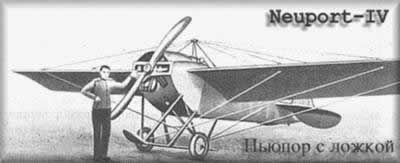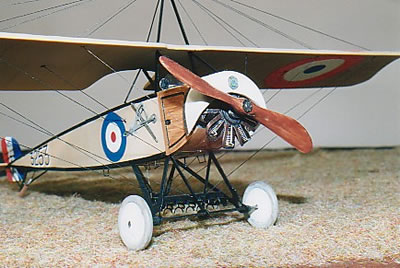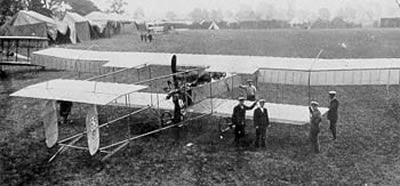Ben Miller and the airplane
Ben Miller told his grandson, Robert "Bobby" Miller, that he saw an airplane during his service in the Czar's army band. We don't know when he was drafted, but he deserted, got married in 1913 and came to America in 1914 before WWI began. To determine when and where he saw the airplane my research has found some relevant information about the Czar's air force.
Grand Duke Aleksandr Mikhailovich, cousin to Nicholas II, was the driving force--the "Father of Russian air power." Although balloons were available sooner, the Russian Air Force was created in 1908-9 with the establishment of training schools at Sevastopol in the Crimea, and at Gatchina, near St. Petersburg. The schools expanded (there were around 8 of them by 1912-13) and all were overseen by the military, in contrast with other country's pre-war training programs. Flight training schools were located at Kiev, Warsaw, Moscow and (IIRC) Riazan. In 1911 and 1912 there were significant military maneuvers, and aircraft were a prominent feature of both exercises. Ben may have seen them if he was assigned to a unit that took part in the exercises, or if he was assigned near a pilot training school. By 1914 the Russians had only about 244 aircraft and a similar number of pilots available. So there would not have been many airplanes for Ben to see circa 1912.
The type of airplanes Ben saw might have included the Nieuport-4 (A monoplane); Nicknamed 'Nieuport with a spoon' for its noseover-preventing ski, this variant had no clear military assignment and normally carried no weapons. Nieuport-IV appeared in Russia in 1912. It was eventually used for reconnaissance missions during WWI. Normally a single-seater, it coud be equipped with second seat back-to-back with pilot. Both seats were comfortable located . . . on top of the fuel tank. The aircraft had original spring-suspended landing gear. Controls were unconventional. Wing wrapping was performed via pedals, and a stick was used to control tail surfaces. In 1911 this scheme was very popular and for some time was considered to became a standard (due to popularity of Nieuport aircraft). But it faded later with introduction of ailerons as a standard instead of the wing wrapping.
The first Nieuport-IV arrived to Russia in 1912 with 50hp Gnome engines. Several
modifications were introduced by Russian pilots and inventors. About 300 were
built by domestic manufacturers.

the Morane Parasol (A high wing monoplane); The name Parasol was french for 'sunscreen' due to the large wing area that covered the cockpit. Its design allowed for easy 'look down' by the pilot.

and the Maurice Farman (shorthorn & longhorn version bi-planes). This biplane
was a "pusher" developed by the French. The Maurice Farman S.11, more
commonly known as the "Shorthorn," lacked the characteristic forward
elevator of the Maurice Farman Longhorn. With the nacelle positioned half-way
up the interplane struts, the pilot was seated well ahead of the wings and the
aircraft was ideally suited to its initial role as a reconnaissance bomber.
Adopted by most of the Allied air services, the Shorthorn was often equipped
with dual controls and widely used as a trainer.
 In addition there were some Sikorsky model S3 and S5 biplanes that the Russian
Army purchased in 1912. All these planes were being flown in the Russian Air
Force during the time Ben was in the army.
In addition there were some Sikorsky model S3 and S5 biplanes that the Russian
Army purchased in 1912. All these planes were being flown in the Russian Air
Force during the time Ben was in the army.
Since Ben was born in 1885 my guess is that he was drafted about age 21 which
would be about 1906. (While his draft age is just a guess, Russian documents
exists listing Jewish draftees at the end of the 1800's who were eligible for
the draft at age 21.) If he deserted in 1912 that would mean he saw the plane
around the time the aviation schools existed, and possibly after the major exercises
in 1911 and 1912 that featured airplanes. Based on the fact that he told Bob
he saw an airplane (singular) my guess is that it would have been a pilot on
a solo flight. This would indicate he was stationed near one of the 8 flight
schools. And since one school was in Kiev where he married in 1913, it is my
hypothesis that this is where he was stationed before he deserted. If he was
at the maneuvers with the many airplanes I think he would have mentioned seeing
a lot of airplanes. Since he married in Kiev on March 11, 1913, my guess is
that he deserted during that year or just before. I doubt he would have stayed
in Russia too long in a deserter status. NOTE: Data provided by Tim Wilson, scholar.